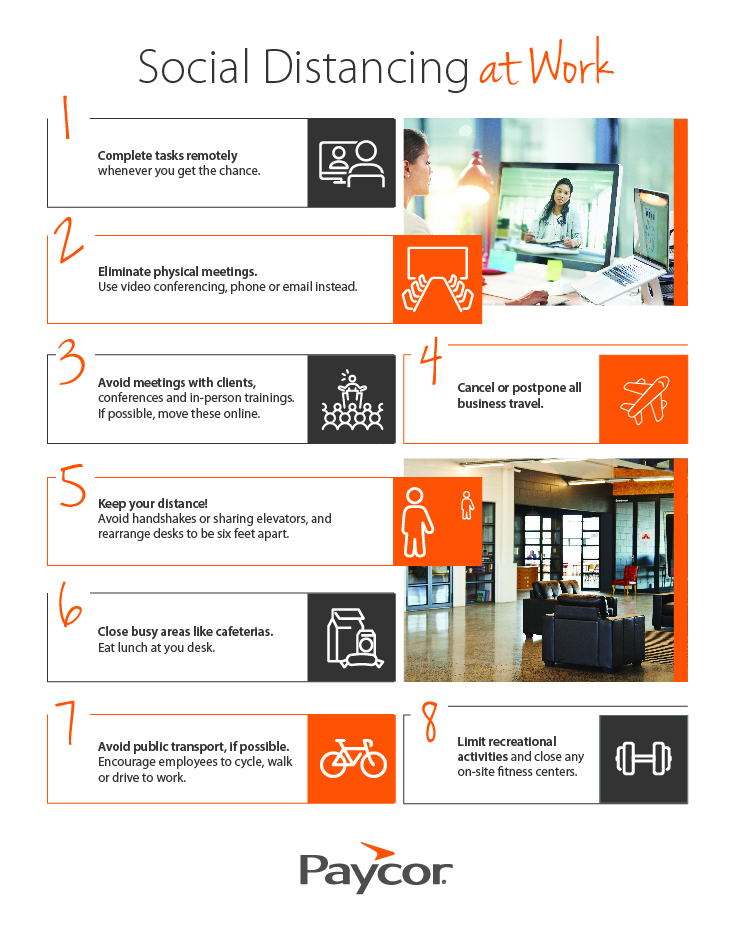Social Distancing in the Workplace: What You Need To Know
There are a lot of steps that companies can take to effectively prevent the spread of Coronavirus in the workplace.
- Keep Distance
-
- Whenever possible, employees should stay 6 feet away from each other. Try rearranging desks to make use of all the space you have available. Remember to avoid shared rides in the elevator!
- No Physical Greetings
-
- Though this may seem obvious, it can be tough to get rid of old habits: no hugs, handshakes or kisses on the cheek. Don’t forget to say hello—but now’s the time to stick to a wave.
- Identify Danger Zones
-
- Think about the places where people are often close together, like a cafeteria or reception area. Either close these off (we recommend employees have lunch at their own desks) or limit the number of people allowed in a room at the same time.
- Limit Customer Interaction
-
- If you can delay (or move online) any meetings with clients, do. If you work in a customer-facing environment, try to make sure any interactions happen at a safe distance. Make sure any lines are spaced out, even if that means people have to wait outside.
- Eliminate Meetings
-
- Even if you can’t work remotely, you can still hold meetings online. It’s also better to avoid wandering over to a colleague’s desk just to check in—shoot them an email instead.
- Think of Anything That Can be Done Remotely
-
- When it comes to social distancing at work, every little helps. If you can think of just one task that can be done from home, you’re reducing the number of employees in the building at one time and making it easier for everyone to keep their distance.
- Limit Extra Activities
-
- Team get-togethers like pick-up basketball games or happy hours can be great for engagement, but now’s the time to postpone for a while. Remembering social distancing rules is especially hard at the end of a tough day—it’s easier to avoid any risks completely.
- Avoid Public Transport
-
- Social distancing isn’t just about what happens in the workplace, it’s also about how you get there. If there’s any way for employees to get to work without cramming into a bus or train, think of ways to make it happen. For essential workers, consider offering a stipend for taxi rides.
- Get Your Scheduling Right
- Try to optimize your schedules so that you have the minimal number of employees present. This can be tricky, especially when there’s a higher risk of no-shows and late call-offs due to sickness. Finally, if you’re still posting schedules on the wall of the staff room—now’s the time to change.


